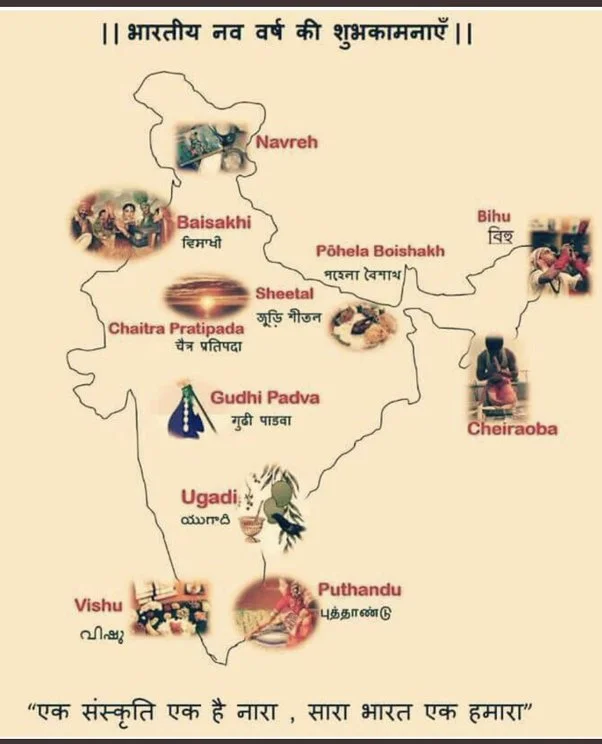In Bhagavad Geeta, Shrikrishna mentioned the superiority of Vasant Rutu amongst all Rutu by the line ‘Rutunam Kusumakar’ | Vasant Rutu is the season of creation, diversity and happiness. The first day of this Rutu is celebrated in India as Gudi Padwa. i.e. Marathi New year’s day. Each festival, regardless of the region or the state where it is celebrated, has a beautiful seasonal, cultural, or mythological significance attached to it.
The festival of Gudi Padwa is celebrated as Yugadi in Karnataka, Ugadi in Telangana and also as Navreh by Kashmiri Pandits and Cheti Chand by Sindhis. It revolves around the celebration of spring in the agricultural calendar. The date signifies the end of one season and the beginning of another.

The Celebration includes the tying of mangal toran made up of marigold flowers and Neem leaves, Gudi hoisting with bamboo stick with inverted silver or copper vessel along with saree and Neem, mango leaves toran on it, decoration with Toran, Rangoli and traditional sweets are part of this beautiful festival.
The main tradition that comes along with Gudi Padwa is eating Neem leaves chutney and wearing Gathi or Batasha har.
Mythological importance –
Chaitra Shukla Pratipada’ is celebrated as Gudi padwa and marks the beginning of the traditional Hindu year and the first day of the Chaitra month of the Hindu calendar. Apart from that, it is widely believed that Lord Brahma created the universe on this day and that was the beginning of ‘Satya yuga’.
Health importance –
It is a well-followed tradition of eating chat made up of Neem leaves, jaggery, hing, etc on the occasion of padwa. This season comes under Vasant Rutu. According to Ayurveda, it is the season of dominant Kapha dosha. This dominant Kapha is seen to be responsible for various allergic skin diseases, rashes, itching, etc. It is also responsible for increasing the load of respiratory tract diseases like asthma and cough. This load accompanied by seasonal changes decreases the immunity of the body.
The Neem leaves chutney is a magical remedy for all the above-said problems.
It maintains Kapha dosha balance and minimizes ill effects due to its vitiation. Neem can be used for internal care as well as for external care.
Neem helps to boost your immune system by maintaining Doshik balance. It possesses both anti-bacterial and anti-fungal properties that help keep your skin clean, radiant, and healthy. Neem also has blood-purifying properties which are good for the skin.
Hence the tradition of eating Neem leaves chutney signifies lifestyle modifications according to seasonal change. and advise us of dietary changes According to the season.
Social importance –
Social health is a very essential domain of our community health. Festivals always spread positivity and happy vibes. Typically, in Maharashtra, wearing or gifting Gathicha haar to kids is a tradition. It is essential to maintain a cold body in a hot outside atmosphere and by this, we can start the new year on a sweet note.
It is believed that hoisting the Gudi outside of the home would ward off any negative energy, making room for good luck and well-being.
Overall, it is a festival of diversity and joy. So celebrate it to the fullest but don’t forget to add Neem leaves chutney to your festival menu. Including health-related tips as a tradition is the beauty of every Indian festival.
Stay healthy, stay happy and happy Gudi Padwa!!
Author:
Dr. Gayatri Kulkarni – Mulye (MD Ayurved),
Vaidya Tejaswini Bhale – Borse (Ayurveda Physician),
Shruti Kulkarni (Clinical Nutritionist)
